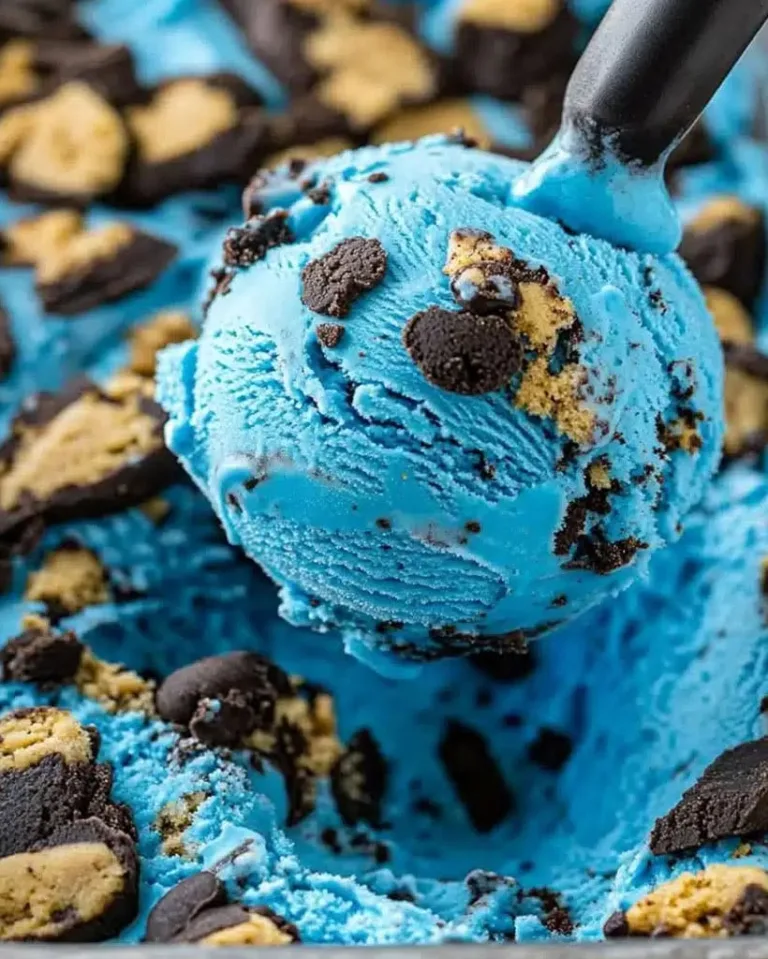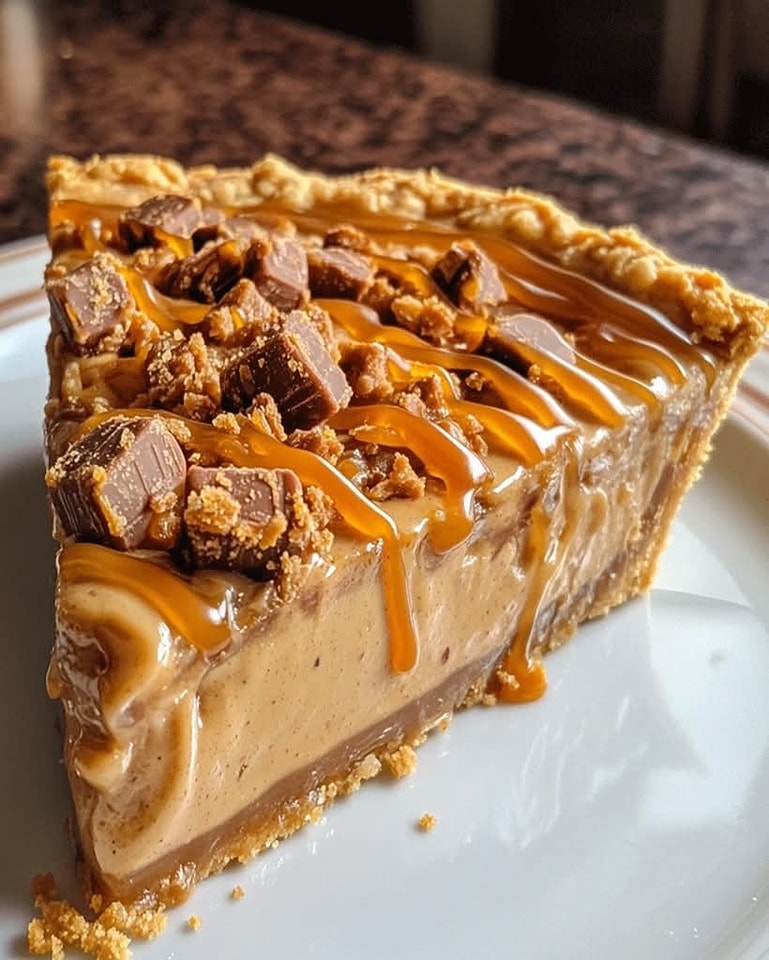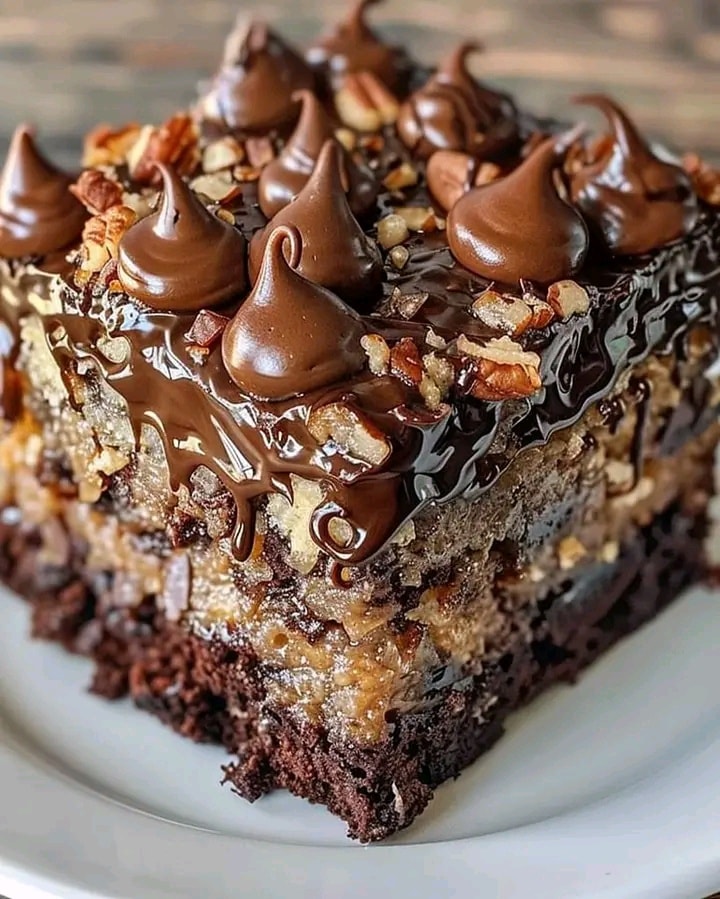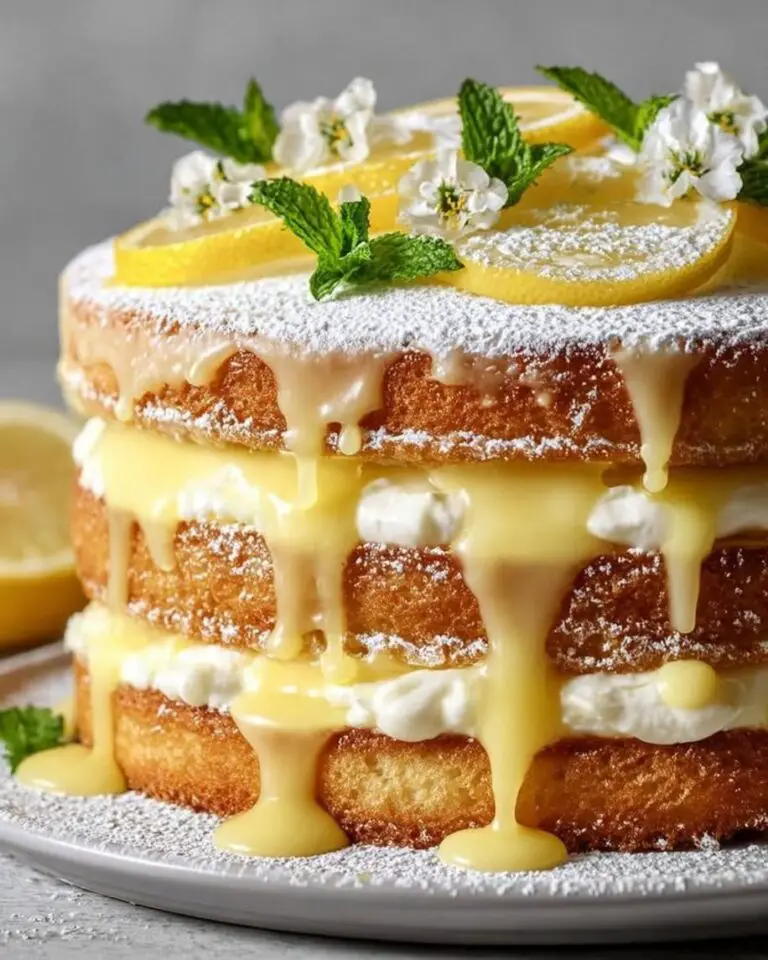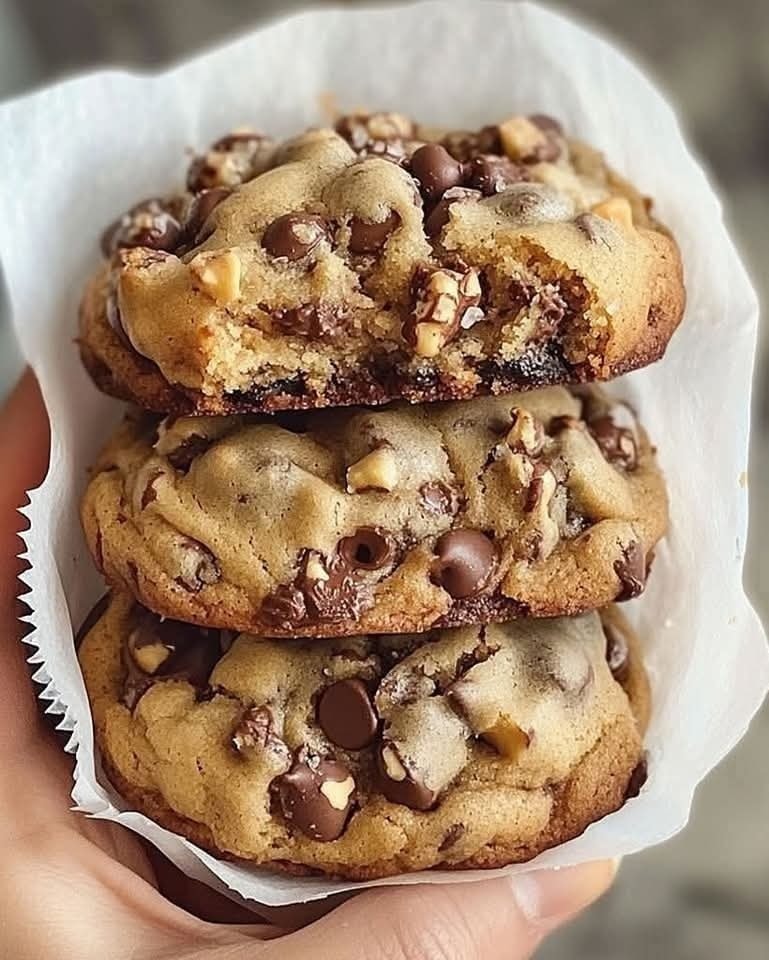Discover the Ultimate Cornbread Recipe You’ll Ever Taste!
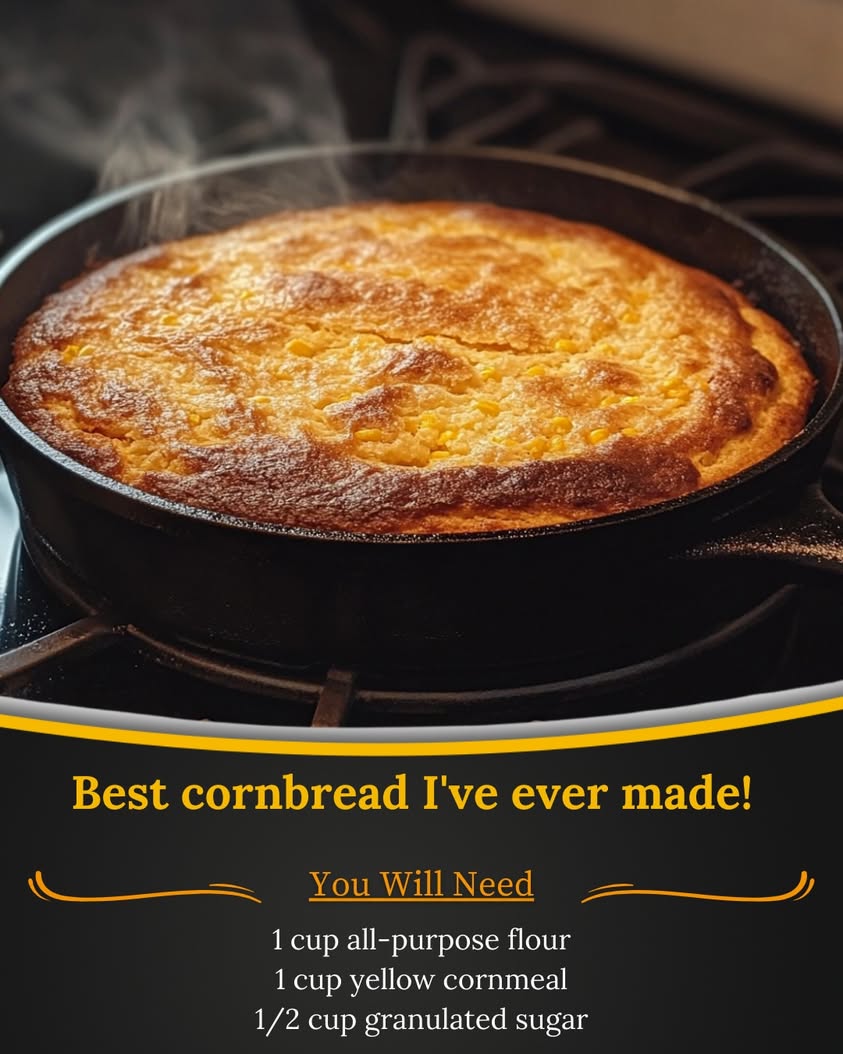
Who’s Ready for the Best Cornbread You’ve Ever Tasted? 🌽✨
Are you ready to elevate your meals with the best cornbread you’ve ever tasted? This cornbread recipe is not just any cornbread; it’s a moist, fluffy, and simply delightful addition to any dining table. Bursting with flavor and a slightly sweet undertone, it pairs oh-so-perfectly with soups, stews, or even as a standalone snack. Imagine the warm, buttery aroma filling your kitchen as this easy and delicious cornbread bakes to golden perfection. Every bite melts in your mouth, leaving you craving for more!
This incredible cornbread recipe is perfect for both seasoned chefs and newcomers alike. With straightforward instructions and minimal prep time, you will be enjoying a slice of heaven in less than an hour. Whether you serve it at a family gathering, potluck, or cozy night in, this cornbread is sure to impress everyone around the table. Let’s dive into all the goodness this cornbread has to offer!
Quick Recipe Highlights
- Flavor Profile: Sweet with a hint of butter, this cornbread is slightly savory, offering a well-rounded taste that satisfies any palate.
- Texture: Light and fluffy inside with a crispy outer crust, this cornbread gives the perfect balance of softness and crunch.
- Aroma: The freshly baked cornbread fills the air with a rich, buttery scent that invites everyone to the kitchen.
- Visual Appeal: Beautifully golden on the outside, with visible flecks of cornmeal that make it irresistible to the eye.
- Skill Level Needed: This recipe is beginner-friendly, requiring no advanced techniques – just mix, bake, and enjoy!
- Special Equipment: All you need is a mixing bowl, a whisk, and an oven-safe baking dish.
Recipe Overview
- Difficulty Level: This cornbread recipe is simple enough for anyone to make, allowing even the least experienced cooks to shine.
- Category: Perfect as a side dish, breakfast item, or snack, this cornbread is versatile for all meals.
- Cuisine: Rooted in Southern cuisine traditions, cornbread delivers a taste of comfort and heritage.
- Cost: Budget-friendly ingredients make this cornbread affordable, with just a few pantry staples required.
- Season: Enjoy this cornbread year-round, but it’s especially delightful during the fall and winter months.
- Occasion: Ideal for family dinners, holiday feasts, and casual get-togethers, this cornbread is a crowd-pleaser.
Why You’ll Love This Recipe
This cornbread delivers on taste and texture in every slice, with a moist crumb that perfectly complements the crispy edges. Each bite offers a delightful sweetness that lingers, making it an unforgettable experience. It’s no surprise that this recipe has become a staple in countless households.
Preparation is a breeze with this cornbread, requiring minimal steps and fuss. You can whisk the dry ingredients, add the wet ingredients, pour the batter, and let the oven take care of the rest. It’s an ideal option for busy weeknight dinners or when hosting guests, ensuring you spend less time in the kitchen and more time enjoying your meal.
Health-conscious eaters can take comfort in this recipe as it’s made primarily from cornmeal, a grain that’s naturally gluten-free and rich in fiber. Using wholesome ingredients also allows you to customize it to your dietary needs, making it a nutritious and satisfying choice for everyone.
Socially, sharing a warm batch of cornbread encourages conversation, connection, and camaraderie among family and friends. There’s something special about breaking bread together, and this cornbread brings people to the table, fostering warmth and togetherness.
Finally, its affordability is a bonus. Cornmeal and basic pantry staples make this recipe cost-effective, allowing you to whip up a large batch without breaking the bank. You get deliciousness without the hefty price tag.
Historical Background and Cultural Significance
Cornbread has its roots in Native American cuisine, where corn was a staple ingredient among various tribes. Over generations, this simple dish evolved, becoming a beloved Southern classic that symbolizes comfort and hospitality. For many, cornbread isn’t just food; it represents tradition, family gatherings, and special occasions.
In Southern culture, cornbread serves not only as a side dish but also as a complement to main courses such as fried chicken and collard greens. Its versatile nature ensures it finds a place in diverse culinary practices, relating to the heritage and communal values of Southern hospitality.
The recipe itself has seen many adaptations throughout time, with families adding their personal touch, whether it’s honey, jalapeños, or cheese. This adaptability reflects the resiliency of the dish, keeping it relevant and loved across generations.
Regional variants have emerged, showcasing the cornbread’s versatility. For example, Northern cornbread tends to be more cake-like and sweet, while Southern cornbread, often made with buttermilk, is denser with a characteristic savory flavor. Each variation speaks volumes about the ingredients and cooking methods favored in different regions.
Ingredient Deep Dive
Cornmeal
Cornmeal is the backbone of this recipe, lending its unique flavor and structure to the cornbread. Originating from ground corn, it’s rich in fiber and essential nutrients, making it a nutritious choice. Look for yellow cornmeal for traditional recipes or opt for white cornmeal for a milder taste.
When selecting cornmeal, choose a fine or medium grind for the best texture. Store it in a cool, dry place to prolong its freshness. If you need a substitute, use polenta or masa harina, although the flavor and texture will differ slightly.
Flour
All-purpose flour is commonly used in cornbread recipes to achieve the right balance of moisture and structure. It complements the cornmeal backbone, creating a light and fluffy texture. Whole wheat flour can be used for a heartier taste and added nutrition.
Ensure your flour is fresh and appropriately stored to prevent spoilage. If needed, alternatives such as almond flour or coconut flour can be used, but they will alter the final result. Be wary of using too much of these alternatives, as they have different properties compared to traditional flour.
Milk
Milk, particularly buttermilk or whole milk, adds richness and moisture to the cornbread. Buttermilk also interacts wonderfully with baking soda, helping the cornbread rise to fluffy perfection. If you’re looking for a non-dairy alternative, almond milk or oat milk can also work, but be mindful of flavor differences.
Store milk in the refrigerator and be sure to check the expiration date. For longevity, freeze unused milk in suitable containers. If you run out of milk, you can make a quick substitute by mixing plain yogurt with a bit of water to achieve a similar consistency.
Eggs
Eggs play a crucial role in binding the ingredients and adding moisture. They also help the cornbread rise and contribute to its delicate texture. For a vegan alternative, consider using applesauce or a flaxseed meal mixture as a binder.
Fresh eggs should be used for the best results. Store them in the refrigerator and use them within their recommended shelf life. If you need to extend the shelf life of eggs, consider freezing them to use later in baking.
Sugar
A touch of sugar balances the savory notes of cornbread, enhancing its overall flavor. This recipe embraces a gentle sweetness, but feel free to adjust based on your preference. Brown sugar adds depth and a hint of caramel flavor.
Store sugar in a cool, dry place to avoid clumping. If you’re looking for lower-calorie alternates, consider honey or maple syrup, but remember that moisture content must be adjusted accordingly.
Common Mistakes to Avoid
- Not measuring ingredients accurately can lead to an overly dry or soggy consistency. Use measuring cups and spoons for precision.
- Overmixing the batter can cause tough cornbread. Mix just until the wet and dry ingredients combine—lumps are okay!
- Skipping the resting time can affect the texture. Allowing the batter to rest lets the cornmeal absorb moisture, resulting in a better crumb.
- Baking at the wrong temperature can lead to uneven baking. Always preheat your oven for consistent results.
- Not testing for doneness can leave you with underbaked or overbaked cornbread. Use a toothpick to check—if it comes out clean, it’s done.
- Using expired ingredients can ruin the flavor. Always check your baking powder, baking soda, and other perishables.
- Forgetting to grease the baking dish effectively can lead to sticking. Use butter or cooking spray for easy removal.
- Cutting cornbread while it’s still hot can cause it to crumble. Let it cool for a few minutes before slicing for perfect pieces.
Essential Techniques
Mixing dry ingredients thoroughly is crucial for even distribution of leavening agents. It prevents any clumps from forming, ensuring a uniform rise. Use a whisk to blend the dry ingredients well, and sift if necessary for a smoother texture.
Whipping the wet ingredients introduces air, creating a lighter batter. Beat the eggs and mix the liquids until foamy. This method helps incorporate air, contributing to the fluffy texture achieved in the final bake.
Pouring the batter into a preheated pan gives your cornbread a beautiful crust. Use a cast-iron skillet for excellent browning, and add a touch of melted butter before pouring the batter for an extra crispy edge.
Pro Tips for Perfect Cornbread
1. Always preheat your oven for optimal baking temperatures, ensuring even cooking of the cornbread.
2. Let the batter rest for about 10 minutes to allow the cornmeal to absorb moisture and improve texture.
3. Experiment with add-ins like jalapeños or cheese for a fun twist on traditional cornbread.
4. Use a cast-iron skillet for an unbeatable crispy crust and even heat distribution.
5. For a sweeter cornbread, add extra sugar or honey in small increments until you reach your desired level.
6. Serve fresh out of the oven with butter and honey for a mouthwatering finish.
7. Store leftover cornbread in an airtight container to keep it fresh for up to three days.
8. Freeze slices for quick snacks or meals later on—just reheat in the oven or microwave when craving cornbread.
Variations and Adaptations
Cornbread can be adapted based on regional influences, with variations like Mexican cornbread incorporating cheese, green chiles, or spices. For a heartier version, try adding cooked bacon or sausage to the batter.
During the fall, consider seasonal adaptations—introducing pumpkin puree or a touch of cinnamon for warm, festive flavors perfect for holiday gatherings. Customize your cornbread to accommodate dietary needs, such as gluten-free options by using certified gluten-free cornmeal.
To cater to vegan diets, replace eggs with flax seeds or applesauce and opt for plant-based milk. This flexible recipe allows for endless variations, satisfying different tastes and preferences.
Explore flavor variations by incorporating herbs like rosemary or thyme for a savory twist. For added texture, fold in nuts or seeds, creating a more complex mouthfeel and crunch!
Serving and Presentation Guide
When plating cornbread, consider cutting it into triangles or squares for a classic look. Pair each piece with a pat of butter for a rustic touch. Garnish with fresh herbs, like chives or parsley, to add an appealing pop of color.
Traditional accompaniments include chili, greens, and soups, enhancing the overall dining experience. For a modern twist, stack small slices with various toppings—for instance, avocado, salsa, or a dollop of crème fraîche—creating an enticing appetizer.
Temperature matters: cornbread is best served warm, either straight from the oven or reheated gently. Avoid overheating to prevent it from becoming dry. For portion control, consider offering small squares as part of a larger spread, allowing guests to sample different dishes at once.
Wine and Beverage Pairing
When pairing wine with cornbread, opt for something refreshing to offset the cornbread’s richness. A crisp Sauvignon Blanc or a fruity Riesling will enhance the dish beautifully. For red wine lovers, a light-bodied Pinot Noir can also pair nicely with cornbread, especially if served alongside savory dishes.
Non-alcoholic alternatives include sparkling water with a splash of citrus for brightness. Herbal teas, particularly chamomile or mint, also create a lovely balance, highlighting the cornbread’s flavors while cooling the palate.
If you’re serving cornbread with chili or hearty stews, consider pairing it with a rich stout or a zesty IPA to complement the savory elements of the meal. Don’t hesitate to experiment to find the combinations that best suit your taste!
Storage and Shelf Life
To extend the shelf life of your cornbread, store any leftovers in an airtight container at room temperature for up to three days. Ensure it’s completely cooled before storing to avoid moisture buildup.
For prolonged freshness, consider freezing cornbread slices. Wrap them tightly in plastic wrap and place them in a freezer-safe bag, allowing them to last for up to three months. When ready to enjoy, thaw in the refrigerator overnight and reheat in the oven or microwave for the best texture.
Signs of spoilage include excessive dryness or visible mold. If cornbread loses its freshness, use it as a base for bread pudding or croutons, reducing waste while still enjoying the flavor.
Make Ahead Strategies
For busy weeknights, consider preparing the dry ingredients in advance and storing them in an airtight container. This way, when you’re ready to bake, simply mix the wet ingredients and proceed with the recipe!
Another option is to bake the cornbread ahead of time for gatherings. Reheat it just before serving to restore warmth and freshness, retaining its delightful texture.
When making cornbread to serve at events, assemble the batter ahead of time and store it in the fridge, then bake just before guests arrive for aroma and warmth that create an inviting atmosphere.
Consider adding fresh elements upon serving—like a drizzle of honey or a sprinkle of herbs—enhancing the flavor while ensuring maximum freshness for optimal enjoyment.
Scaling Instructions
If you wish to halve the cornbread recipe, maintain the same proportions for each ingredient to preserve the taste and texture integrity. Use a smaller baking dish to accommodate the reduced amount.
When doubling or tripling the recipe, adjust accordingly, ensuring to account for baking time and pan size. Larger batches may need extra cook time, so check for doneness with a toothpick.
When scaling, consider the size of your kitchen tools. For instance, if using a larger mixing bowl or a more extensive pan, ensure that your oven can accommodate these changes without affecting even baking times.
Nutritional Deep Dive
This cornbread recipe is relatively high in carbohydrates but offers a modest amount of protein, making it a source of energy. The use of whole grain cornmeal contributes fiber, promoting digestive health and contributing to a feeling of fullness.
Vitamins and minerals such as magnesium and phosphorus are found in cornmeal, adding to its nutritional benefits. When prepared mindfully with minimal sugar and the right fats, this cornbread aligns well with balanced diet objectives.
Portion size plays a significant role in managing caloric intake. Keeping servings moderate allows enjoyment without compromising dietary goals, making cornbread an excellent addition to well-rounded meals.
Dietary Adaptations
For those following a gluten-free diet, substitute traditional flour with a gluten-free flour blend while keeping cornmeal as the base. Ensure all ingredients are certified gluten-free to avoid cross-contamination.
Dairy-free options can easily be achieved by using plant-based milk alternatives and removing eggs, replacing them with flaxseed meals or other vegan substitutes, enabling a delicious cornbread that suits vegan preferences.
For a low-carb or keto-friendly adaptation, seek low-carb flour alternatives and reduce the sugar content significantly, focusing on rich flavors to compensate for the lack of sweetness.
The paleo and Whole30 diets will also appreciate a cornbread made with almond or coconut flour instead of traditional grain-based ingredients, maintaining a similar texture while staying compliant with dietary requirements.
Troubleshooting Guide
If your cornbread comes out too dense, check the freshness of your leavening agents, as expired baking powder or soda can affect rising. Additionally, overmixing can create a tough texture, so try mixing just until combined.
Should your cornbread be too dry, consider adding milk or eggs for increased moisture next time. Always ensure to test for doneness before time runs out to avoid overbaking.
For flavor balance issues, adding a pinch of salt can enhance sweetness without overpowering. Taste-testing the batter before baking can help ensure you’re happy with the flavor profile.
If you encounter ingredient substitution challenges, make extra notes during your trial runs, noting which adjustments yield the best results for future use.
Recipe Success Stories
Countless home cooks have shared their appreciation for this cornbread recipe after integrating it into their family traditions. Many write about how their kids relish the soft, golden morsels paired with their favorite meals, making dinner time a cherished event.
Some readers have successfully modified the recipe, offering creative ideas for add-ins and spices that cater to personal tastes, with success stories of jalapeño cheddar cornbread becoming a crowd favorite during gatherings.
Sharing photography tips, readers often comment on their beautiful captures of cornbread, emphasizing its warm color and appetizing texture as it draws in everyone’s attention during family feasts.
Others have experienced new variations, showcasing the flexibility and creativity this basic recipe allows, turning cornbread into a canvas for flavorful toppings and unique pairings.
Frequently Asked Questions
Can I use frozen corn in this recipe?
Yes, frozen corn can be used to add texture, but it should be thawed and drained before mixing with the batter for the best result.
How do I know when the cornbread is done?
Insert a toothpick into the center; if it comes out clean or with a few crumbs, your cornbread is ready to be enjoyed!
Can I make cornbread ahead of time?
Absolutely! Cornbread can be baked in advance and reheated. It keeps well in the refrigerator for a few days or can be frozen for longer storage.
What should I serve with cornbread?
Cornbread pairs beautifully with chili, soups, barbecue dishes, or greens. It is versatile enough to complement many savory meals.
Is cornbread better with butter?
Yes! Brushing freshly baked cornbread with melted butter enhances its flavor, adding richness and a beautiful sheen.
Can I add other flavors to cornbread?
Definitely! Experiment by incorporating herbs, spices, cheese, or even sweet elements like blueberries for delightful variations.
Is it possible to make cornbread without eggs?
Yes! You can substitute eggs with applesauce, yogurt, or flaxseed meal to keep the recipe vegan-friendly.
What if my cornbread is too crumbly?
If your cornbread is too crumbly, it could be due to overbaking or not enough moisture. Ensure to monitor the baking time closely next time!
Can I adjust the sweetness of the cornbread?
Absolutely! Feel free to adjust the sugar based on your personal preference, or try honey or maple syrup for natural sweetness.
What is the best way to store leftover cornbread?
Store leftover cornbread in an airtight container at room temperature for up to three days, or freeze it for longer storage.
Additional Resources
For those eager to explore further, check out our collection of related recipes like cheesy cornbread muffins or classic Southern chili as perfect companions for your cornbread. Our technique guides detail how to master mixing and baking for outstanding results.
We also provide ingredient information for cornbread staples, helping you understand which types of cornmeal are best for your baking endeavors. Additionally, look for equipment recommendations to ensure your kitchen is prepared for successful baking!
Seasonal variations based on what’s in season can also be explored, turning your cornbread into something special tailored to contemporary tastes throughout the year!
Join the Conversation
We’d love to hear from you! Share your cornbread-making stories and successes on social media using our tagline, and let us know how you’ve personalized this classic recipe. Engage with other cooking enthusiasts and discover photography tips to showcase your delightful cornbread creations! Community feedback helps us improve and innovate, ensuring everyone can cook with confidence.
The Recipe
Best Cornbread
Serves: 8 servings
Prep Time: 15 mins
Cook Time: 25 mins
Total Time: 40 mins
Kitchen Equipment Needed
- Mixing bowl
- Whisk
- Baking dish or cast-iron skillet
- Measuring cups and spoons
- Spatula
Ingredients
- 1 cup cornmeal
- 1 cup all-purpose flour
- 4 teaspoons baking powder
- ½ teaspoon salt
- ¼ cup sugar
- 1 cup milk (or buttermilk)
- 2 large eggs
- ¼ cup melted butter
Directions
- Preheat your oven to 400°F (200°C). Grease your baking dish or skillet with butter.
- In a mixing bowl, combine the cornmeal, flour, baking powder, salt, and sugar. Mix well.
- In another bowl, whisk together the milk, eggs, and melted butter until well combined.
- Pour the wet ingredients into the dry ingredients, stirring until just combined. Do not overmix.
- Pour the batter into the prepared baking dish or skillet, spreading it evenly.
- Bake for 25 minutes or until golden brown and a toothpick inserted into the center comes out clean.
- Let cool slightly before slicing and serving warm with butter.
Recipe Notes
- For a sweeter cornbread, increase the sugar to 1/2 cup.
- You can fold in jalapeños or cheese for an extra twist!
- Store leftovers in an airtight container for up to three days.
- This recipe can be made ahead of time and reheated before serving.

